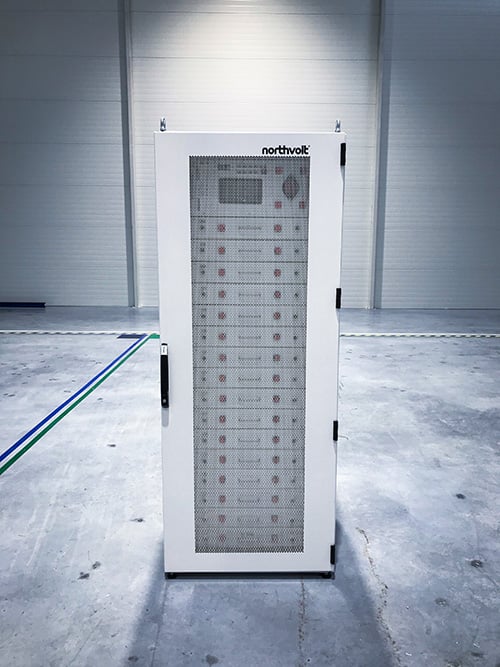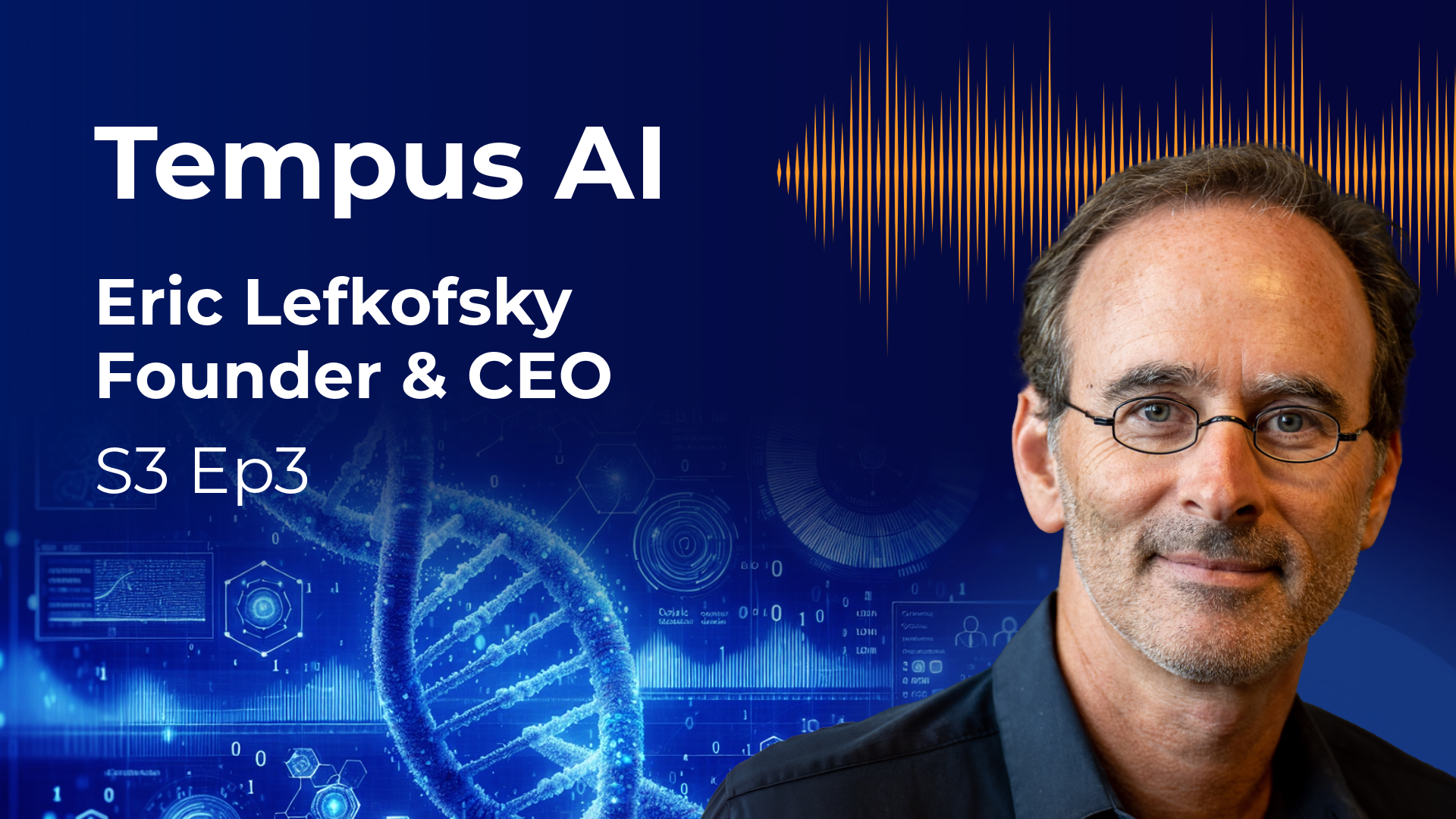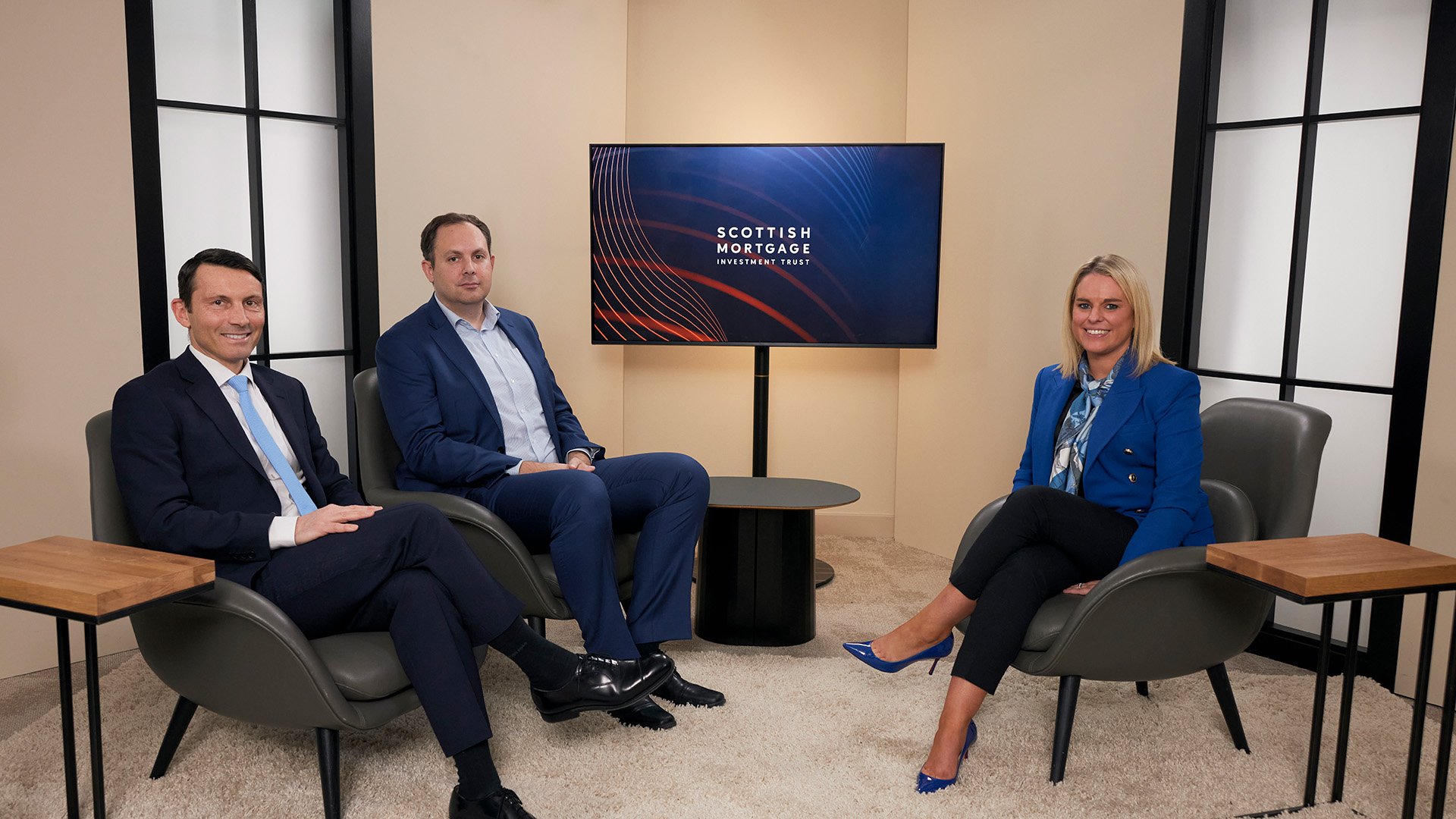May 2023
Article
8 minutes
In it for the future: investing in progress
Tom Slater – Manager, Scottish Mortgage
Key Points
- Technology-driven transformation and progress only grow stronger
- The semiconductor industry will likely benefit from AI’s need for silicon, among other things
- By investing in the agents of change, we can benefit from the accelerating and irreversible pace of change
As with any investment, your capital is at risk.
Geopolitical tensions have escalated this year, most notably with Russia’s invasion of Ukraine, which marked the return of major war to Europe and had significant global repercussions. The invasion exposed the fault lines between nations and created economic challenges such as price shocks, supply disruptions and food shortages.
Inflation emerged as a global concern, affecting both developed and developing nations alike. Meanwhile, the great power competition between the United States and China intensified, with both countries adopting increasingly adversarial stances and actions, further straining their relationship.
On a more positive note, many countries abandoned lockdowns, travel restrictions, and other pandemic-related measures due to the success of vaccines and therapeutic treatments.
Having initially been slow to respond to rising inflation, central banks raised interest rates aggressively. The US Federal Reserve was holding the federal funds rate at around zero as recently as the first quarter of 2022 and buying billions of dollars of bonds every month to stimulate the economy.
This started to change in March 2022 with the first of a series of rate increases that summed close to five percentage points over the Company’s financial year, one of the steepest increases on record.
This has led to strain in the banking sector and the collapse of several US regional banks. The impact of tighter financial conditions on consumers, inflation and the broader economy will be felt over the coming year, given the delays in the system.
In this environment, investors have flocked to assets that are already proven and profitable. Predictability can have a deep allure as uncertainty grows and people are fearful. Investing in such assets may be appropriate for others, but we are sceptical that our shareholders will benefit in the long run if we too resort to following the crowd.
Buying predictability may provide temporary comfort, but it is by embracing discomfort that we can entertain the possibility of outsized returns from exceptional companies. The universe of businesses with bounded opportunities and well-analysed competitive positions is unlikely to yield extraordinary outcomes.
The sharp increase in interest rates and associated collapse in the supply of capital has led to a fearful mood in financial markets. This negative disposition ignores the exciting progress in several key technologies and companies. The deterioration in markets has a greater impact in the near term, both through the immediate prospects for corporate profitability and the decline in our stock price relative to the value of our assets. However, over the longer term, the more profound consequences will come from developments in areas such as mRNA-based medicines or artificial intelligence.
Progress
Growth and innovation are not dependent on the direction of macro-economic developments. Instead, we pay close attention to exponential trends such as Moore’s Law in semiconductors, Carlson’s curve in genomic sequencing or Wright’s Law in manufacturing.
These predictable trajectories of progress are a valuable way to understand what is happening in the world. A feature of these laws is that progress each year can underwhelm but cumulative progress over a decade or more is remarkable. The past year was an exception because there were breakthroughs across various industries and technologies.
One striking example came from healthcare and our largest holding, Moderna. The company has demonstrated that mRNA technology can be used to create effective personalised cancer vaccines.
Phase 2 trials in advanced melanoma showed a 44 per cent increase in survival for those taking the therapy in addition to the current standard of care. Pharmaceutical giant Merck paid US$250 million to co-develop the technology with Moderna, and we expect Phase 3 trials in various cancer types to launch this year.
Moderna now has 30 vaccines in clinical trials for infectious diseases and with the addition of therapies for cancer, liver disease and lung disease, the number of potential applications for Moderna’s technology is multiplying.
While the focus of energy markets was on the immediate impact of the crisis in Ukraine, the long-term trajectory away from carbon remains. The Inflation Reduction Act in the United States has created a framework for significant investment in electrification, aiming to prevent Chinese companies from dominating the supply chain. Europe must respond with an equivalent strategy to avoid all the industrial capacity being built elsewhere.
Our holding Northvolt, the European battery manufacturer, made its first commercial deliveries in 2022 as its production facilities in Northern Sweden ramped up.
It is tapping into enormous latent demand for electrification and has announced US$55bn of contracts to supply major automotive manufacturers. It is expanding its manufacturing footprint outside Sweden as it scales up rapidly to meet the industry’s needs.
Solar generating capacity doubled in the three years to 2022 although it remains less than 5 per cent of the global energy mix. In December, there was the first confirmed example of net power production from a nuclear fusion reaction.
This result has proven elusive for several decades and is an important milestone on the path to harnessing the technology. The price deflation that will eventually flow from renewable generation makes identifying direct investments challenging, but it is crucial to consider how abundant clean energy will impact society’s ability to innovate.

The Henry Adams curve describes the 7 per cent annual growth in energy available to civilisation since the invention of the steam engine 300 years ago. However, since the 1970s oil price shocks, we have fallen off the curve and energy consumption in Western economies has stagnated.
As a result, we have seen significant innovation in areas where we can do more with less. Semiconductors have turned some science fiction predictions into reality, but advances in other areas have lagged.
We have few space stations, no lunar landings or bases, no interplanetary travel or colonies and no supersonic aircraft or flying cars. Amidst the many challenges, a missing ingredient for all these endeavours has been abundant, low-cost, clean energy. Our largest private holding, Space Exploration Technologies (SpaceX) made 60 launches in 2022, more than one per week and twice the number it achieved the previous year.
The commercial space market has finally become a reality thanks to SpaceX’s reusable rockets, which have reduced launch costs by 95 per cent from those of the space shuttle. This is even more striking when you consider that Moore’s Law and associated software have made each kilogram of payload much more productive.
The first iterations of extra-terrestrial services have been focused on sectors including agriculture and mining. Consumer applications are now appearing, such as T-Mobile and SpaceX’s collaboration to eliminate the mobile-reception dead zones that still cover 20 per cent of the US landmass. Over time, research and development (R&D), manufacturing, tourism, and other space-based applications will become more common.

We have been commenting on progress in Artificial Intelligence (AI) for some time, and we saw some meaningful breakthroughs this year. At the risk of hyperbole, this could be the start of another computing paradigm akin to the personal computer or smartphone.
Most noteworthy was the success of OpenAI in making AI technology available to non-technical users with the release of ChatGPT. The service signed up a hundred million users in just two months as engineers and entrepreneurs recognised the potential offered by this approach to computation.
AI can already augment human software programmers and enhance productivity, and AI services will likely write most computer code in the future. The implications of AI-generated student essays are less encouraging and only a minor example of the governance challenges these systems will create.
AI will likely transform many parts of the economy, but it would be foolhardy to make specific predictions. We can, however, say with some certainty that AI systems will require a lot of silicon. OpenAI has suggested that the computing power needed to run the latest models doubles every 14 weeks.
Our holding NVIDIA is a key supplier and enjoys formidable advantages, as the chip technology it has built over decades for computer games has proven ideally suited for AI computation. The semiconductor industry depends on ASML’s exceptional engineering skills to produce cutting-edge chips, and AI is just one driver of the strong demand we anticipate over the next decade.
One of the largest AI companies in the world, Tesla, rolled out initial access to its full self-driving software in the US this year. It has now driven 150 million autonomous miles, providing with a vast data advantage over the rest of the automotive industry.
The system’s capability is already impressive, but the pace of improvement will be most important over time. In the short run, new vehicle sales will face headwinds from higher interest rates, but electric vehicles continue to gain share and Tesla, as the market leader, has the scale and profitability to invest and grow in challenging conditions. In the long run, its software and AI capabilities will be deployed to a much larger fleet of vehicles, and others will struggle to compete.
Portfolio
Turnover in the portfolio remains low, reflecting our belief in the companies we own. The lone sale from last year’s top thirty was Alibaba. We reduced other Chinese holdings and sold two smaller positions, KE Holdings and Full Truck Alliance.
These sales were driven by concerns about the growth of big online platform companies in China after several regulatory interventions, as well as reflecting disquiet about deteriorating Sino-US relations.
China remains an important market for stockpickers. It is one of the world’s largest economies and home to some of the most innovative management teams we know (our best performing stock last year was the Chinese ecommerce company PDD). However, we will continue to manage the overall exposure of the Company in light of the geopolitical environment.
We have substantially reduced our holding in Illumina, the sequencing machine company. We still believe gene sequencing is a fundamental building-block for advances in healthcare, but the company’s execution has been disappointing, which has been reflected in a weak stock price.
We have retained positions in other companies where valuation declines have hurt us in the short run. Ginkgo, the synthetic biology company, has struggled to explain its story to public market investors since listing in 2021 but has delivered operationally and is well placed to consolidate its nascent market.
Blockchain.com, the crypto banking business, has been hit by the weak digital asset market and the bankruptcy of a large customer but ought to have a much stronger competitive position in the next up-cycle given the larger problems experienced by its peers.
We are confident that Affirm, the US point-of-sale lender, will be able to navigate the interest rate cycle while maintaining credit quality and growing its loan book.
We purchased a new holding in the gaming company Roblox. Its audience use it as an entertainment platform initially and the conversion of those players into creators and paid users will underpin substantial growth over the next decade.

We also took a position in Cloud networking provider Cloudflare which will be an essential enabler of the next generation of software systems. We added to Latin American ecommerce and finance company, MercadoLibre, which is still in the early stages of market penetration and is adept at creating the products its users need.
As with many of our established holdings, it benefits from a more benign competitive environment as capital is withdrawn. It is now a top-five holding.
Conclusion
Despite recent stock market declines, significant operational progress continues, reflecting the accelerating pace of change throughout the economy. While this progress has not translated into our investment results lately, we need to remain disciplined and patient.
We know this has been painful for shareholders, but history shows that periods of poor performance are inevitable. Our approach will never be consistently in favour, and we should not deviate from it to avoid short-term headwinds. If patient ownership of growth companies was easy, there would be far more competition.
We cannot know when stock markets will reflect the progress we see, but in the long run, share prices follow company fundamentals. In the meantime, we will focus on the bigger picture and avoid impulsive decisions based on market movements.
Previous downturns have drawn attention to companies solving important problems and we remain vigilant for new opportunities. There is no going back to a world of static and unchanging industries. The retreat to perceived safety can only be temporary, as safety is ephemeral amidst such upheaval.
It is by investing in the agents of change and partnering to develop big new opportunities, that exceptional returns for shareholders will be generated.
Scottish Mortgage Annual Past Performance To 31 March each year (net %)
| 2020 | 2021 | 2022 | 2023 | 2024 |
| 12.7 | 99.0 | -9.5 | -33.6 | 32.5 |
Source: Morningstar, share price, total return, sterling.
Past performance is not a guide to future returns.
The trust invests in overseas securities. Changes in the rates of exchange may also cause the value of your investment (and any income it may pay) to go down or up.
The trust invests in emerging markets where difficulties in dealing, settlement and custody could arise, resulting in a negative impact on the value of your investment.
The trust has a significant investment in private companies. The trust’s risk could be increased as these assets may be more difficult to sell, so changes in their prices may be greater.
About the author - Tom Slater
Manager, Scottish Mortgage
Tom Slater is manager of Scottish Mortgage. He joined Baillie Gifford in 2000 and became a partner of the firm in 2012. Tom joined the Scottish Mortgage team as deputy manager in 2009, before assuming the role of Manager in 2015. Beyond that, he is the head of the US Equities team and a member of another long-term growth equity strategy. During his time at Baillie Gifford, Tom has also worked in the Developed Asia and UK Equity teams. Tom’s investment interest is focused on high-growth companies both in listed equity markets and as an investor in private companies. He graduated BSc in Computer Science with Mathematics from the University of Edinburgh in 2000.
Important information
This communication was produced and approved at the time stated and may not have been updated subsequently. It represents views held at the time of production and may not reflect current thinking.
This content does not constitute, and is not subject to the protections afforded to, independent research. Baillie Gifford and its staff may have dealt in the investments concerned. The views expressed are not statements of fact and should not be considered as advice or a recommendation to buy, sell or hold a particular investment.
Baillie Gifford & Co and Baillie Gifford & Co Limited are authorised and regulated by the Financial Conduct Authority (FCA). The investment trusts managed by Baillie Gifford & Co Limited are listed on the London Stock Exchange and are not authorised or regulated by the FCA.
A Key Information Document is available by visiting our Documents page.
Any images used in this content are for illustrative purposes only.









